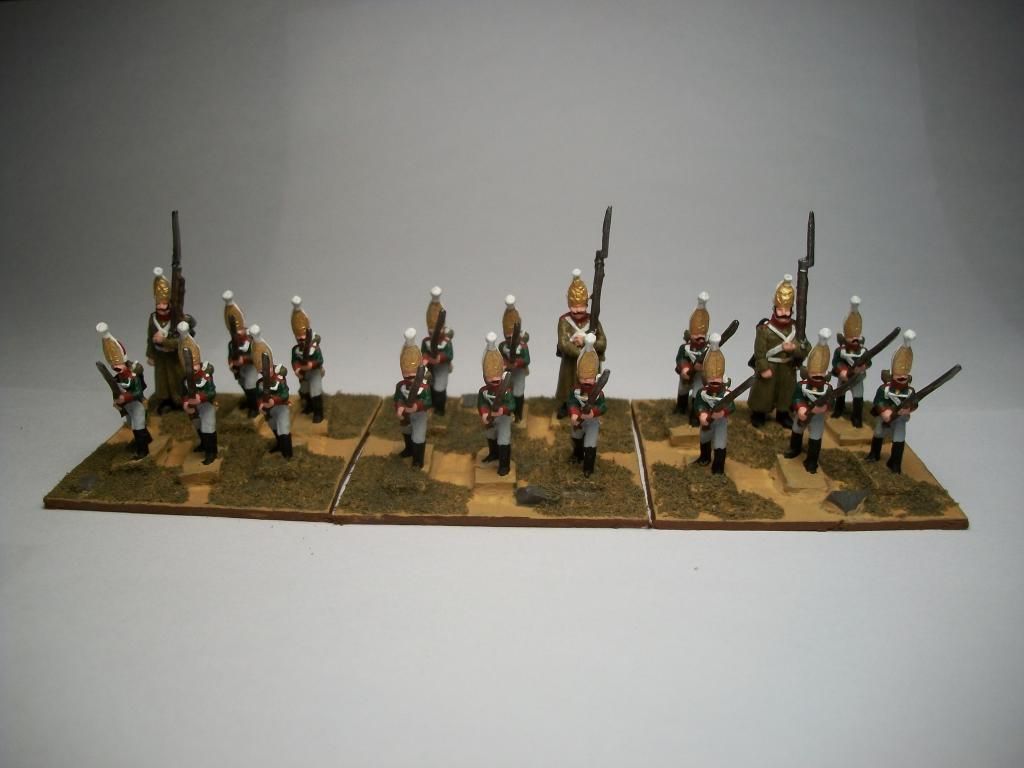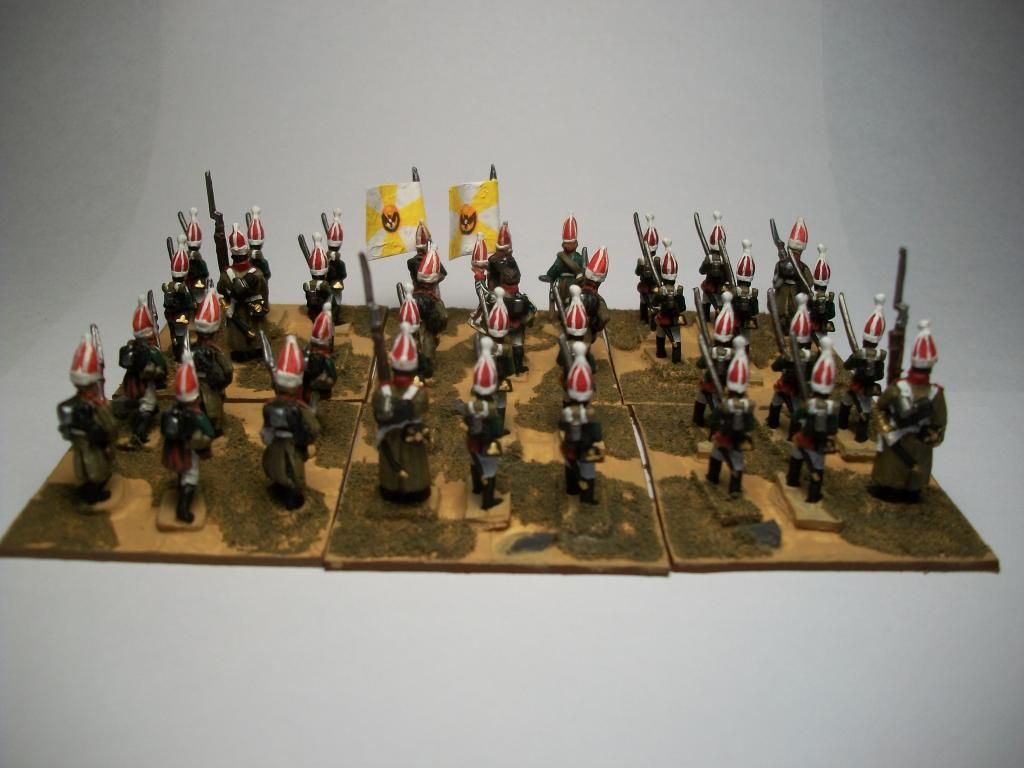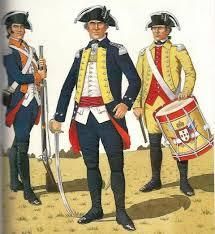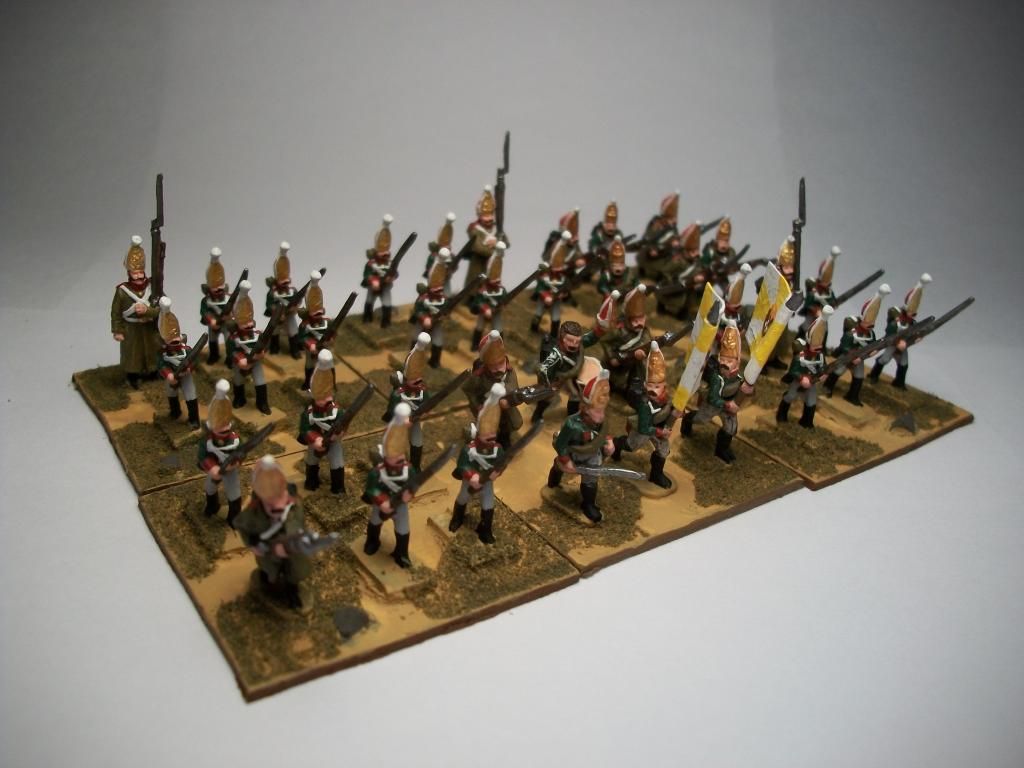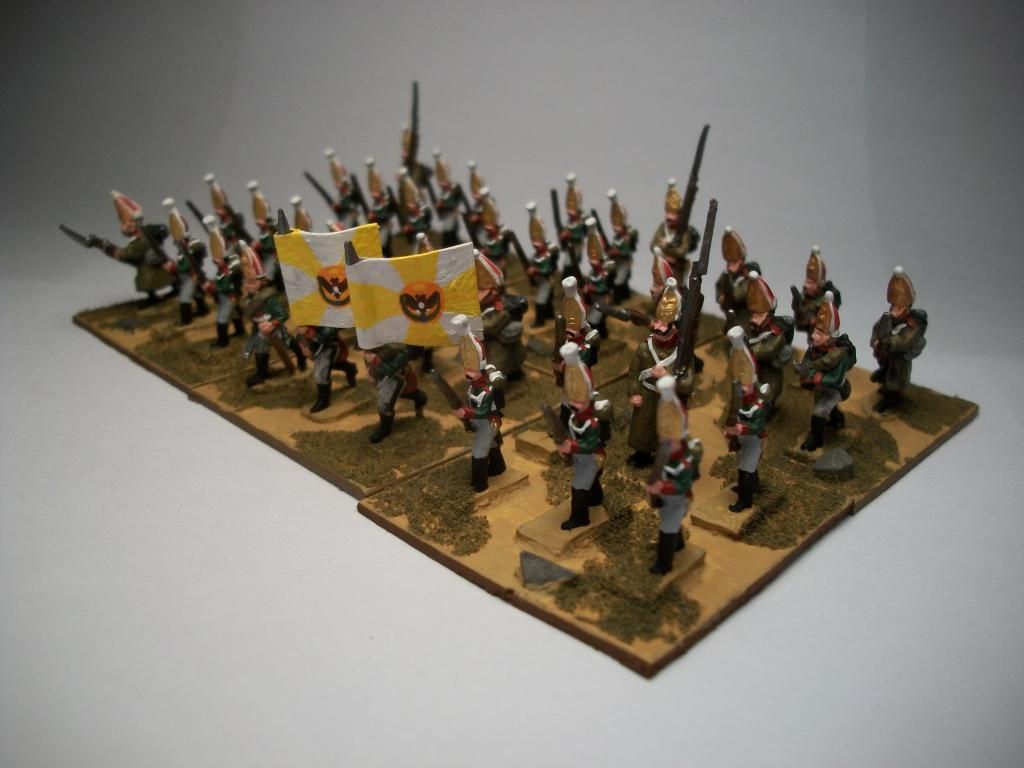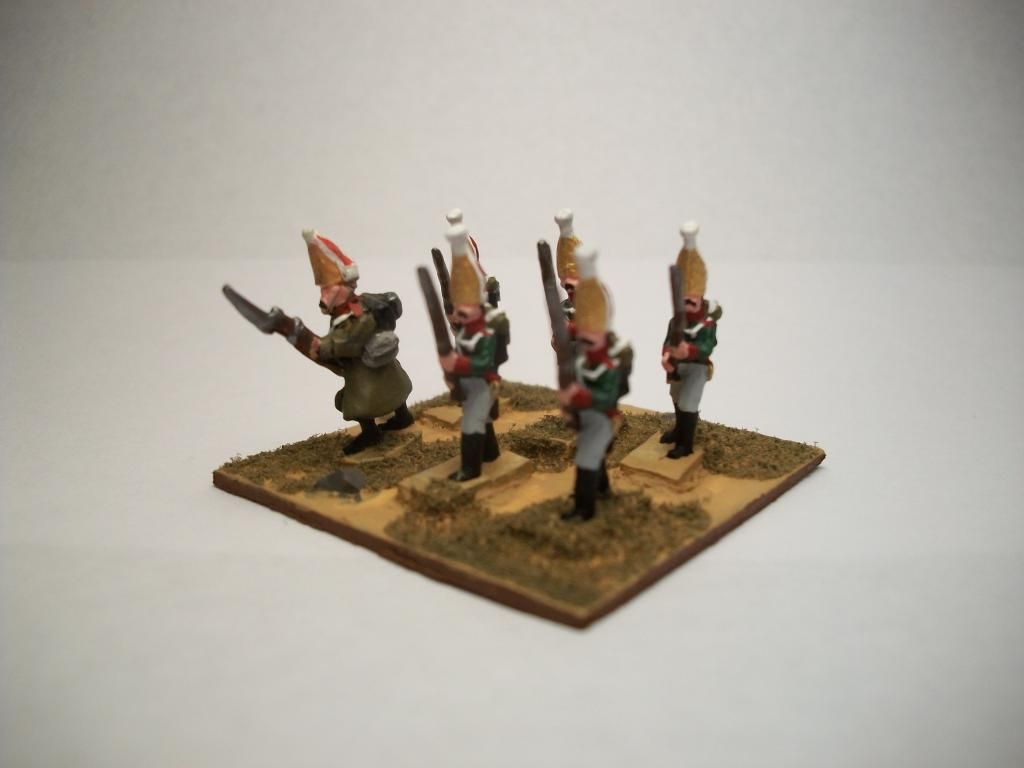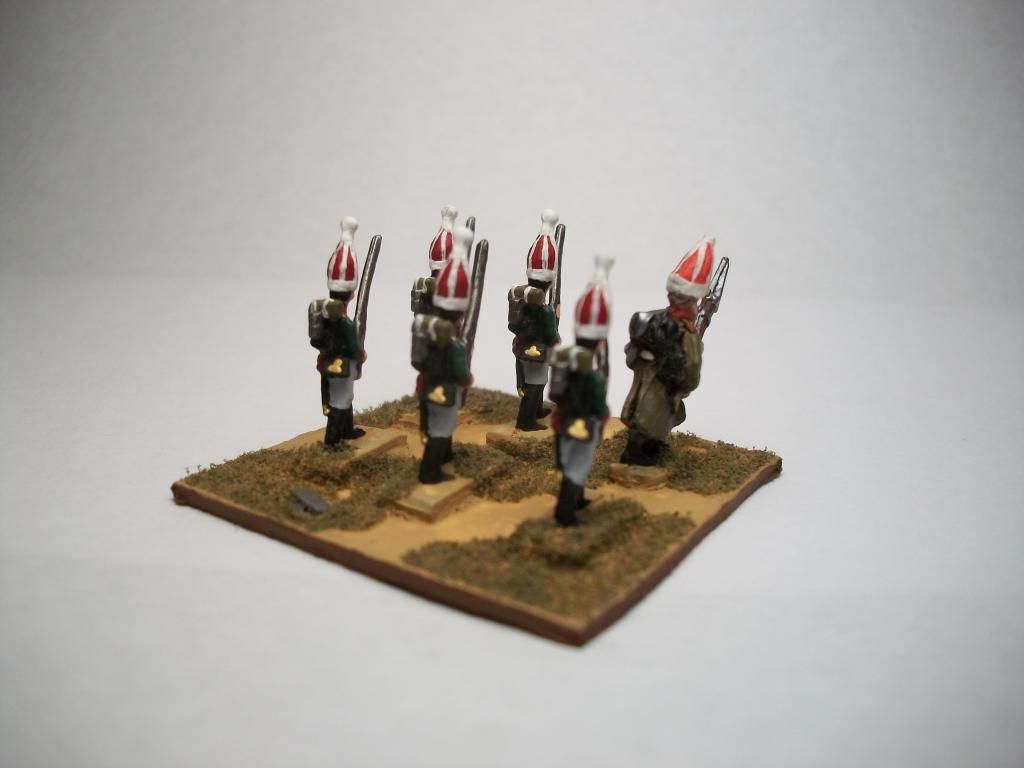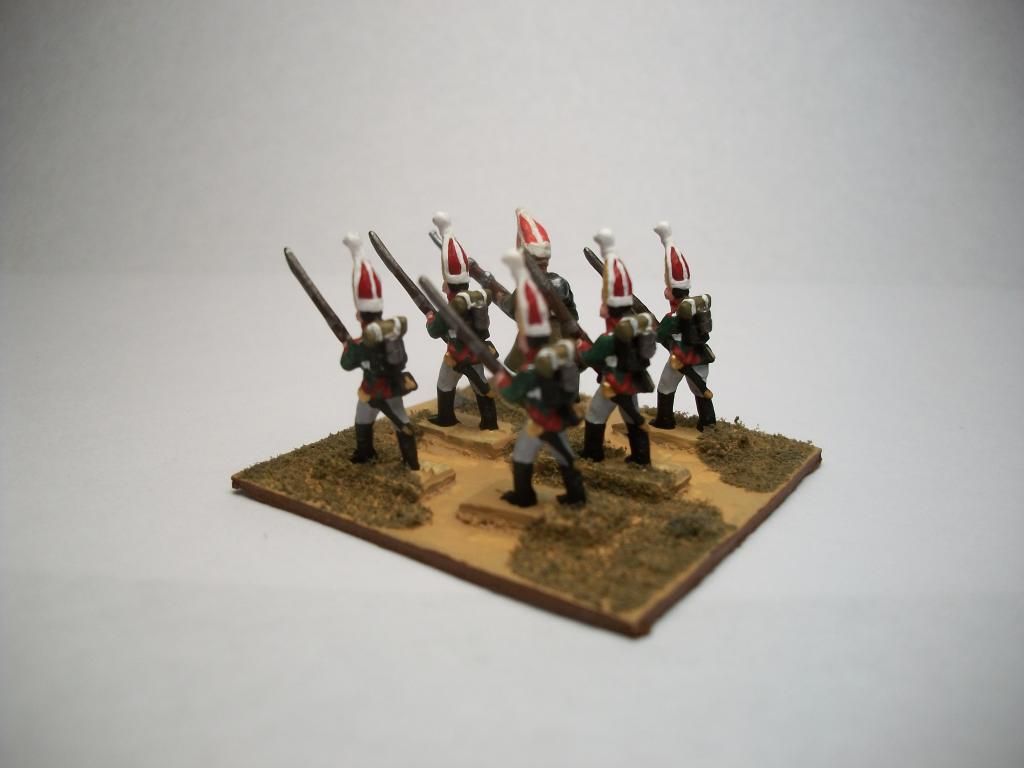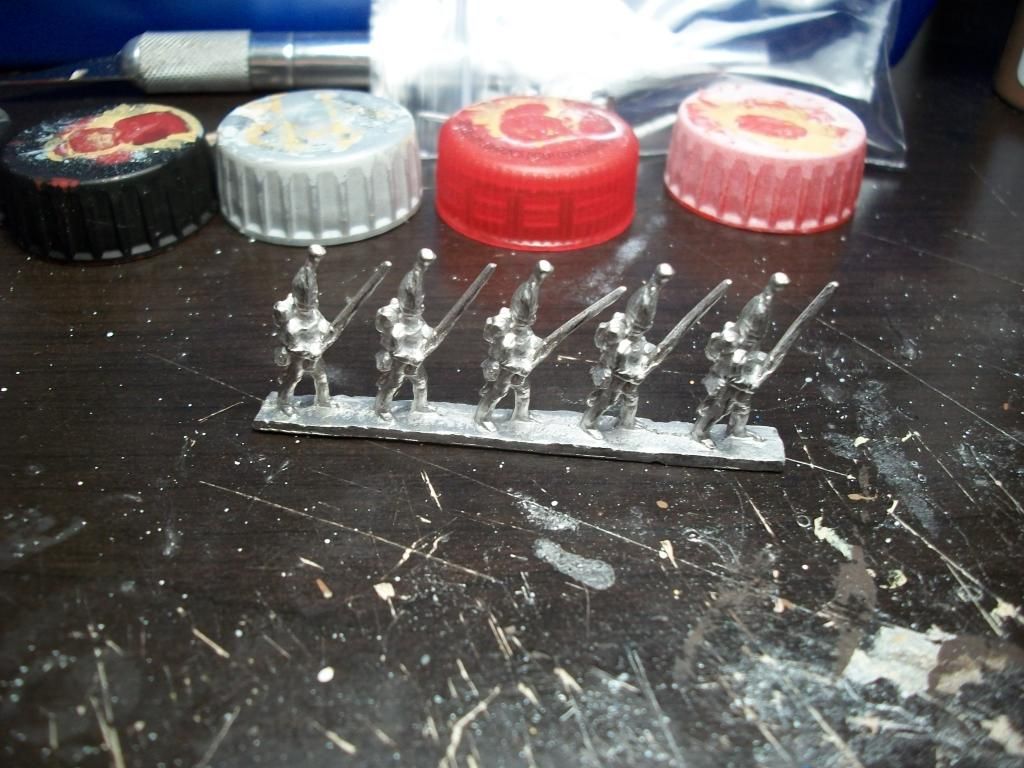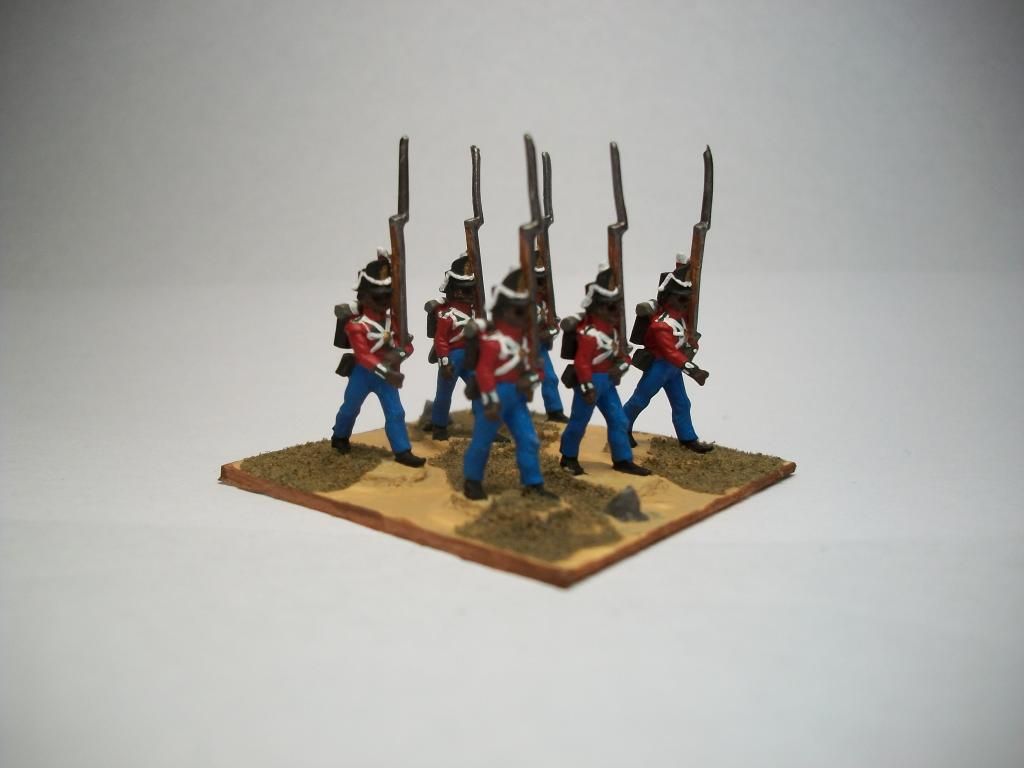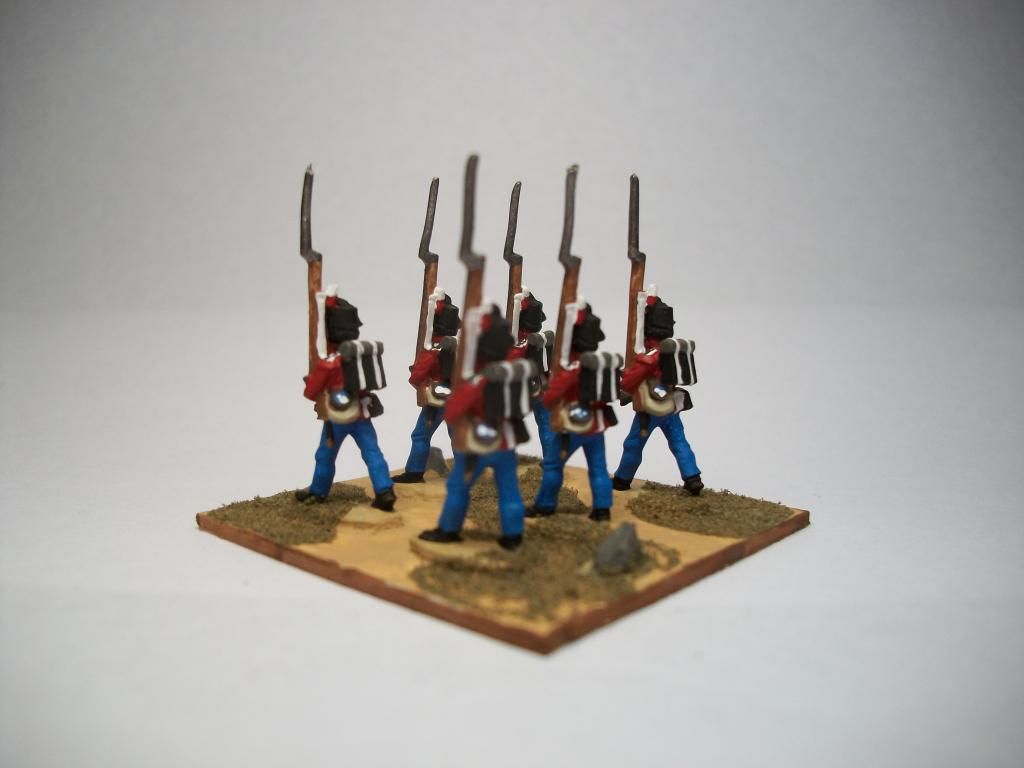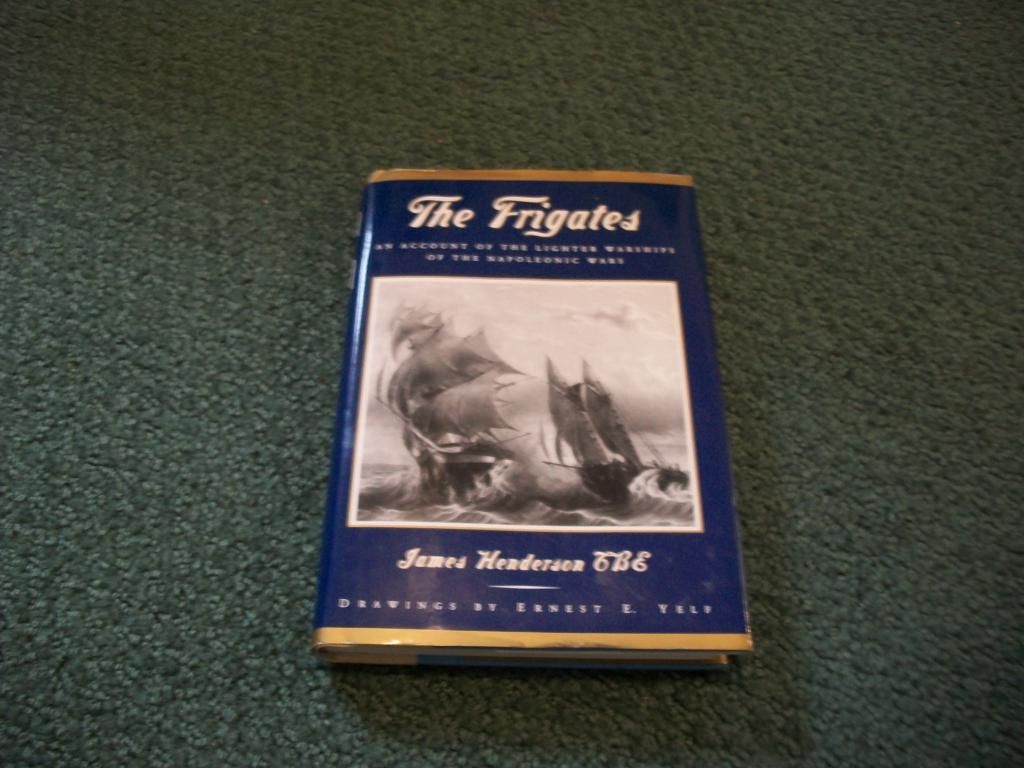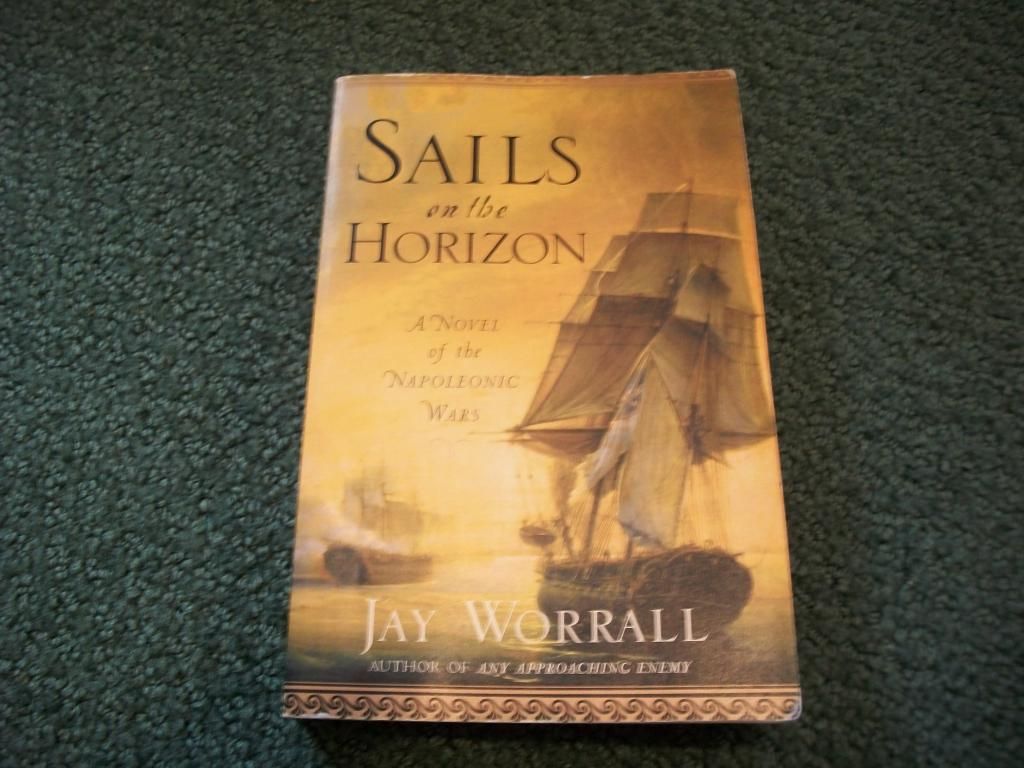Hello everyone!
It's been a little while since I've been able to get anything posted up the the blog, and my only excuses are that I haven't had the time and I've been under the weather. But, this means that now that I have the time, I've come with a vengence! Today I've completed the 1/88th Regiment of Foot (the Connaught Rangers) for the Peninsula, as well as a stand of the 5th West India Regiment for New Orleans. I've also bought a few more figures since my last post, as well as a few books that might be of interest. So without further ado, here we go!
(Remember to click on the pictures for bigger versions.)
Painted Figures
I painted up the remaining thirty figures that I needed to complete the Connaught Rangers, which I started way over a year ago (you can see the command stand in detail
here). Unlike the command, which were all AB figures, the rank and file are a mix of Fantassin 18mm and Essex 15mm. The Fantassin figures are on par size and proportion wise with the AB figures, but they are cruder in their sculpting style. The Essex figures are nice and clean, but look a little dwarfish. Anyway, here are the figures that I finished up:
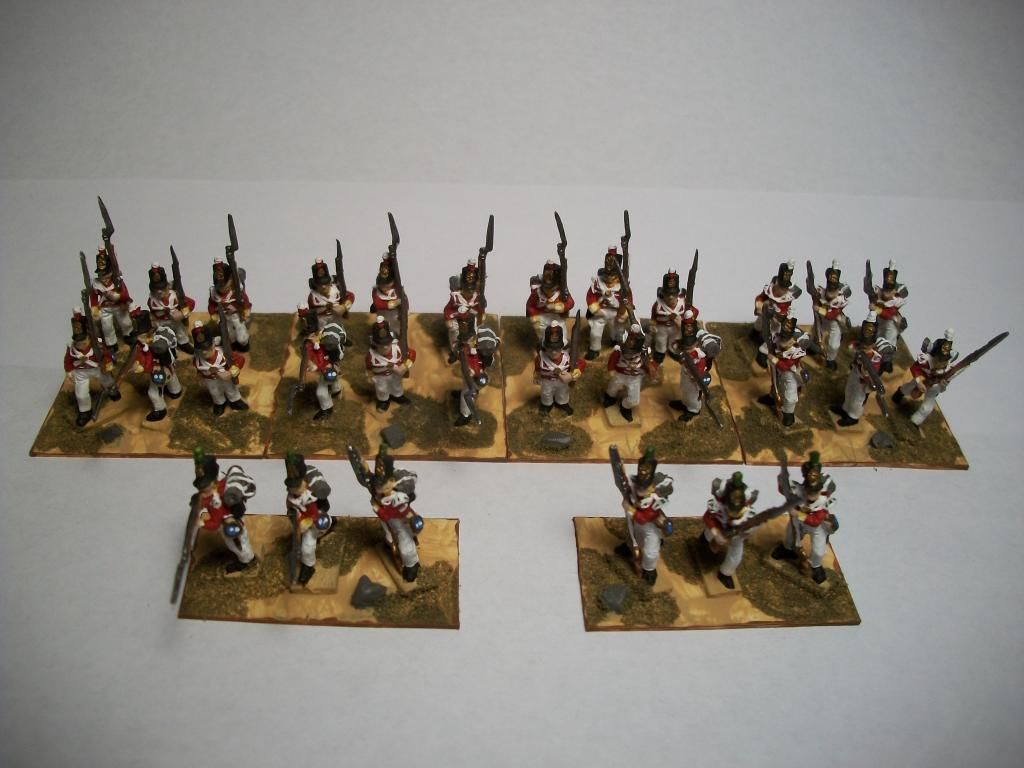 |
| The Irishmen of the 1/88th that I completed most recently... |
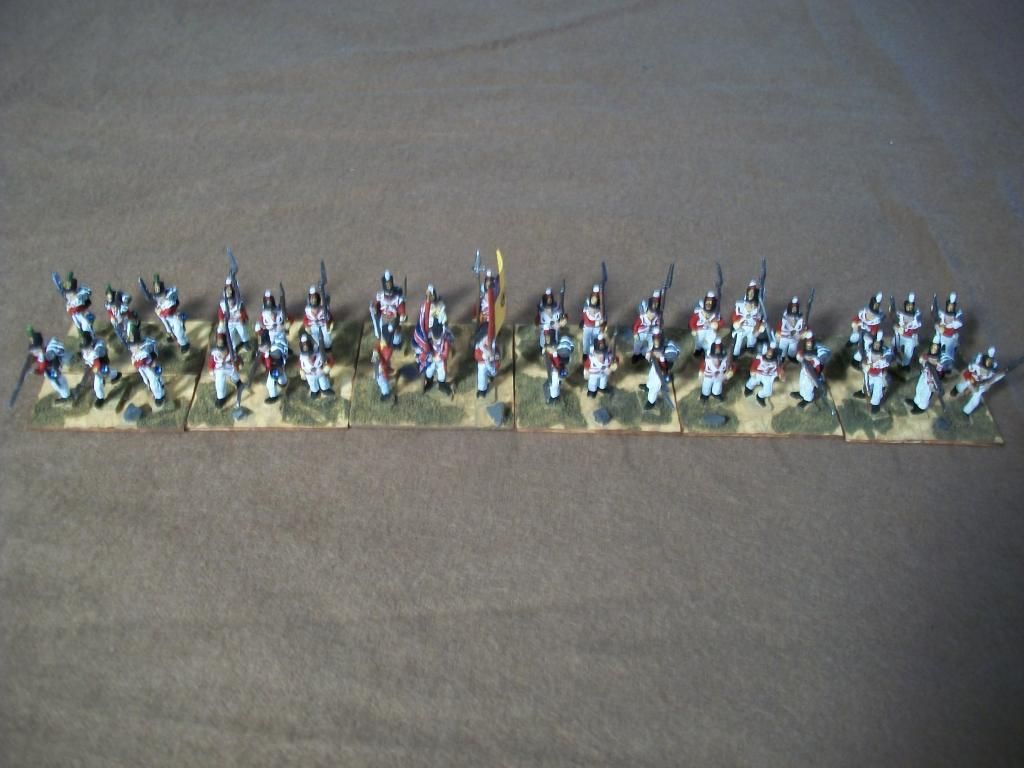 |
| ...and the entire Battalion drawn up into line. General Picton (who commanded the 3rd Division) apparently had a love-hate relationship with these Irish soldiers, probably because, in Oman's words, the 88th was "the most Irish of all Irish regiments." However, it is apparent that he came to admire their tenacity in a fight. Check out this link for a nice concise history of the Connaught Rangers during the Peninsular War. |
With the 1/88th finished, this completes the British 3rd Division's 1st Brigade, commanded by Henry Mackinnon at Fuentes de Onoro. Here's the entire brigade together:
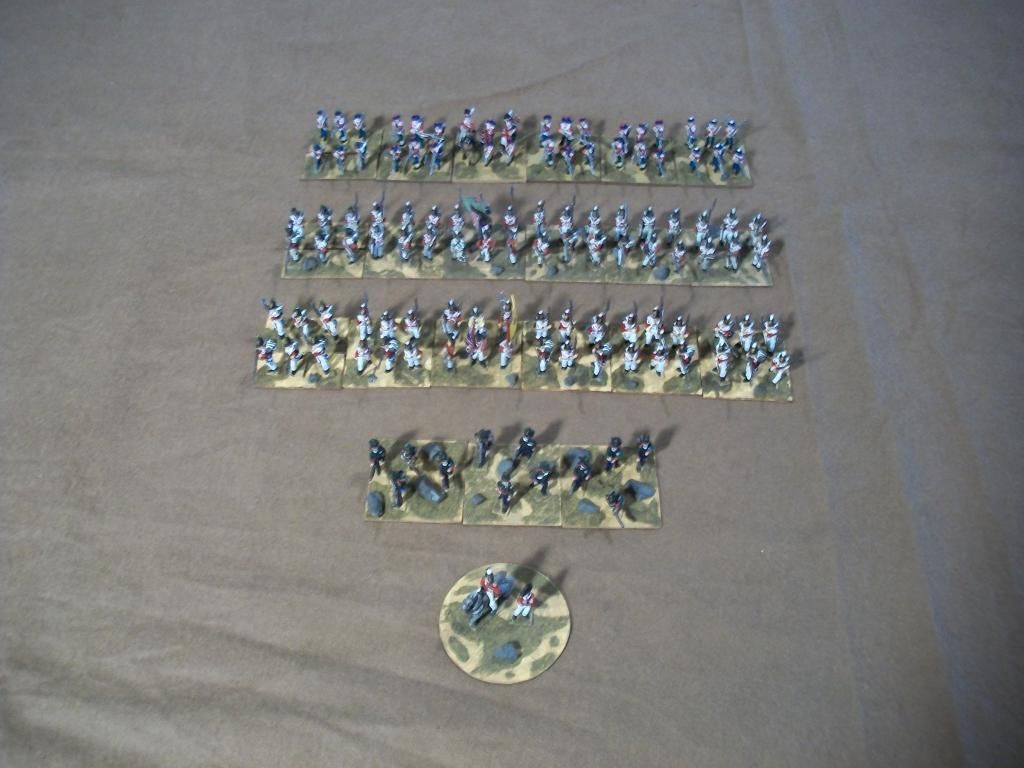 |
| 1st Brigade, Picton's 3rd Division. From front to rear: Henry Mackinnon, Brigade commander; 3 companies, 5/60th Regiment (Royal Americans) 1/88th Regiment (Connaught Rangers); 1/45th Regiment (Nottinghamshire); 1/74th Regiment (Highland). |
Finally, I completed six Minifigs 15mm British in Belgic shako figures to represent a company of the 5th (Howe's) West India Regiment, which fought at the Battle of New Orleans. The unit was a 'colored' Regiment, consisting mostly of former slaves and freedmen and commanded by white officers. These units performed well and were mostly tollerant of the equatorial diseases which devestated European soldiers serving in the Carribean. This and the other West Indies Regiments had distinctive uniforms, especially after 1812, with Belgic shakos, jackets with rounded lapels of the facing color and piped shoulder straps, and light blue trouser-gaiters.
Purchased Figures
If you keep track of such things, you may have noticed that the "Purchased" columns of the 2015 Totals box have been crreping steadily upwards. Most of these figures were AB orders that I placed in order to flesh out the figures that I already have in order to complete several units, as well as the figures I wanted for a couple of command stands (Wellington and Marshal Ney). I also picked up nine mounted Russian general staff officers off of eBay, as well as another 1/72 Strelets set:
French Foot Dragoons and Polish Grenadiers, Set 009. I got these mainly for the foot dragoons, of which I will eventually painted up a full Regiment, probably the 16th Dragoons, though the Poles will be useful for fleshing out the Vistula Legion.
With me leaving for boot camp next week, I doubt I'll get much more painted until well into the summer at the earliest, so I think that this year I'll probably be in the negative numbers for my "totals."
Books
I picked up three books which may or may not be interesting to y'all out there. The first is a new set of rules, the second is a non-fiction book, and the third is a Napoleonic fiction novel.
Recently I recieved in the mail a new set of rules: Field of Glory Napoleonics. I've spent the last couple of weeks looking them over, so I thought that I'd write down some initial impressions. That being said, of course, without playing a game with them it's impossible to get a full picture of the game's nuances. Basically, it's a Corps level game, with emphasis on grand tactical maneuvering. From what I can tell, the rules strive to be very period specific, with a plethora of charts and tables that represent the different troops of the Napoleonic Wars, as well as emphasizing the use of period-appropriate tactics in order to be successful. Since it's a corps level game I won't have enough figures painted to play it any time soon, but it will be nice to have for big battles in the future.
I picked up this non-fiction book on eBay because I was running out of things to read and it was cheap:
The Frigates: An Account of the Lighter Warships of the Napoleonic Wars, by James Henderson, CBE. This is a historical monograph chronicling the majority of the frigate actions fought by the Royal Navy, begining in 1793 when Revolutionary France declared war on Great Britian and going through the end of the Napoleonic Wars in 1815. The frigate actions between the Royal Navy and my own United States Navy during the War of 1812 are also discussed. I've only just begun reading it, but it is well written and is very detailed.
Finally, I picked up
Sails on the Horizon: A Novel of the Napoleonic Wars by Jay Worrall. This is a fiction book, written in the same spirit as Patrick O'Brien's Jack Aubrey/Stephen Maturin novels and C.S. Forester's Horatio Hornblower novels. The novel opens in 1797 at the Battle of Cape St. Vincent, and follows the early career of a lieutenant named Charles Edgemont as he is promoted to Commander, finds love, and goes to sea, fighting his own frigate for the first time. I read it in two days; I thought it was well written and quite the page-turner. If you like O'Brien or Forester, check this one out.
Coming soon: Currently I'm working on another command stand, Marshal Ney. When Ney first arrived from AB, he was slightly miscast, missing his right foot. A little bit of green stuff later and no one's the wiser. He and his two companions are primed and I've already started painting them.
Other than that, I don't have much more to say. I'll post Ney when he's done, then we'll see how much time I have left remaining here in Kentucky; I leave for US Navy boot camp a week from today.
Questions, comments and suggestions are always welcomed and appreciated. Thanks for looking!
-Chuck
